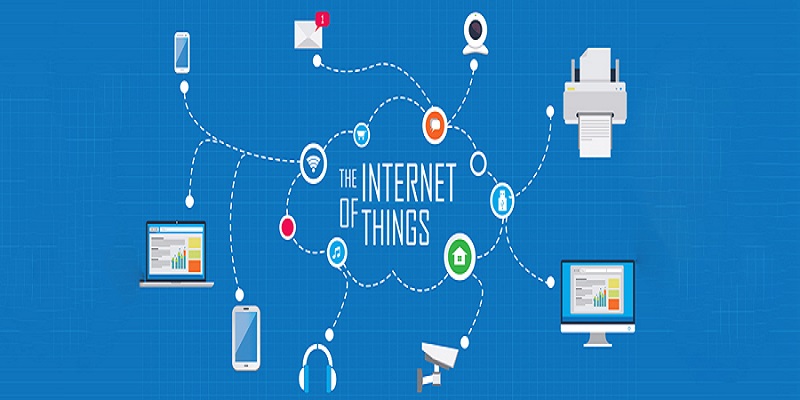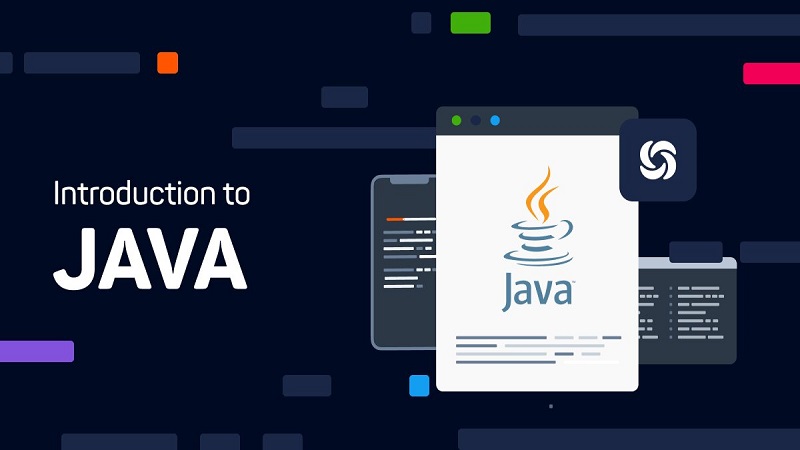Since the landscape of software development is turning rapidly, this has led to an upsurge in faster-released cycles, hence creating the urge for quality deliverance of products. While testing has to keep pace with this change, QA (Quality Assurance) automation in this changing scenario has become an unavoidable practice with which the testing can be streamlined, human error is reduced, and a consistent quality of the software is ensured. On the other hand, when scripting for automation is done traditionally, most often with the prevailing limitations, it will develop many barriers to efficiency and effectiveness. This is where Artificial Intelligence (AI) steps in as a game-changer.
Understanding AI-Powered Testing
AI has facilitated a series of industrial changes in the last couple of years, and software development is not an exception. AI-driven testing boosts QA efficiency by introducing intelligent automation that goes beyond traditional scripting. It uses machine learning (ML) algorithms that automate complex tasking, improve test coverage, and streamline testing in support of the QA automation testing services teams to focus on higher-level strategies for testing and delivering software faster.
Traditional QA Automation Challenges
While traditional QA automation scripting tools such as Selenium and Appium have done immense help, they inherently limit the process with some key challenges:
- Time-Consuming Script Development and Maintenance: Advanced applications generally take much time for the automate script creation and maintenance. Even a small change in the user interface of the application may break the existing scripts which require constant maintenance.
- Less Flexibility for Dynamic UIs: Conventional scripts find it hard to cope with highly dynamic UIs that change very often. This, in turn, may lead to failures in scripts again, thus reducing test coverage.

- Inefficient Test Data Management: Large amounts of test data management are executed in very labor-intensive and error-prone ways with manual/old-fashioned methods.

These challenges have a great impact on the performance of QA automation, rendering it ineffective in assuring quality software efficiently.
How AI Revolutionizes QA Test Automation
Machine learning in QA is actually a step change in the level of automation of testing. These AI-powered tools use machine learning algorithms to learn from the existing test data and user behavior so that they can do the following:
- Identify changes to the UI and adapt to them. AI can discover broken scripts and automatically patch them up, thereby decreasing the maintenance workload. This improves robustness and reliability far beyond test automation.
- AI-enabled testing optimizes QA automation by generating intelligent test cases. AI analyzes application behavior and historical data to identify critical areas and user flows, automatically creating comprehensive test cases that cover a wider range of scenarios.
- AI can use historical defect data and user behavior patterns to prioritize test cases. Thus, QA teams can best focus their efforts on high-risk areas, thereby helping them optimize testing resource allocation and reap the best out of defect detection.
Benefits of AI-Powered Testing
AI can significantly uplift the automation of the process by QA teams. Some of the key benefits are:
- Reduced Testing Time: AI accelerates the entire process of test execution by automating manual and routine tasks related to script maintenance and management of test data.
- Better Test Coverage: Test case generation enabled by AI ensures thorough testing, helping in the identification of more edge cases and peculiar cases that may be missed by traditional ways of testing.
- Reduced Maintenance Costs: Self-healing tests mean that there will be fewer scripts to maintain manually, freeing the QA resources to be deployed on more strategic activities.
- Integration of Continuous Testing: Integration testing services of AI with CI/CD pipelines will take care of continuous testing and rapid feedback loops. That is how AI accelerates time-to-market and brings early defect detection.
- Better Quality in Releases: By improving test coverage and efficiency, AI-driven testing helps deliver high-quality software with minimum defects.
In summary, AI-driven testing boosts QA efficiency, quickens release cycles, and yields a high return on investment.
Case Studies
- Case Study: AI-Driven Regression Testing at an E-Commerce Giant
- Challenge: A leading e-commerce web service provider struggled to keep up with the growing challenge of regression testing. Since the complexity of the app is always at its peak for updates due to the mobile environment. There would be a lot of time and resource investment in manual updating and execution of regression tests. This again increased the gap in time between releases and low responsiveness to new feature requirements.
- Solution: The firm implemented an AI-based test automation solution with machine learning algorithms. This enabled creation and management of the test cases for automation. So, maintaining and creating the regression tests was far more comfortable and less time- and effort-consuming to update. The AI tool adapted to UI changes to keep the tests robust and reliable.
- Results: The AI-based testing enabled the e-commerce testing services platform to reduce its testing execution time by 70%, which, in turn, has released precious QA resources for other activities. Also, test coverage was increased by 30%, as test case maintenance got automated and hence ensured comprehensive testing with the least number of risks for regressions.
- Case Study: AI Tools Help Fintech Startups Discover Key Security Vulnerability
- Challenge: The start-up in the financial technology space was growing at a rapid pace, requiring them to speed up the development and release cycle. The test case generation by them was a manual process and hence was a bottleneck, since the team was really struggling to actually perform comprehensive testing. The start-up was also concerned about possibly missing security vulnerabilities using conventional testing methods.
- Solution: The FinTech startup used a machine learning-based AI testing tool that analyzed the behavior of the application and user journeys. So, it would make the creation of high-coverage test cases for a wide range of scenarios and edge cases automatic. Additionally, the AI tool is used to tie in with security testing frameworks, which would give pointers to the prospective loopholes.
- Results: With AI generating test cases, the startup had achieved testing cycles much faster, hence leading to quicker delivery of new features. Most importantly, the AI solution found a critical security vulnerability quite early in the development phase. This proactive detection potentially saved the startup millions of dollars in potential losses and protected their users’ sensitive data.
These examples demonstrate the real-world impact of AI-enabled testing optimizes QA automation. By improving efficiency and effectiveness, AI is transforming the way QA teams operate, delivering tangible benefits for businesses across various industries.
AI for Test Design and Optimization
AI goes far beyond script creation and automation of their execution. It’s the optimization of the whole process of test design. Here’s how:
- Intelligent Test Case Generation: This process filters critical areas and user flows of application behavior and user journey from the available historical data. It then prepares an intelligent base on which comprehensive test cases are automatically generated, considering a wider range of the scenario space, including edge cases and complex interactions, for more thorough testing and less possibility of missing critical defects.
- Test Suite Optimization: The AI will be able to look into the results of testing and identify the redundant or ineffective test cases. Then, it will propose users to eliminate such tests or refactor them to have an optimized test suite, finally raising overall efficiency in testing.
- Prioritization and Risk-Based Testing: Analyzes historical defect data and user behavior patterns to conceptualize certain areas that are evidently at a higher risk of defects, allowing the QA team to optimize their testing efforts. Testers in QA can then more easily focus on the higher-risk areas first. This risk-based approach ensures that critical areas have been subjected to rigorous testing, enabling the maximum detection of defects and reduction in risk associated with the release of faulty software.
Table: Traditional vs. AI-Driven Testing
|
Feature |
Traditional Testing |
AI-Powered Testing |
| Script Development | Time-consuming, manual | Automated, self-healing |
| UI Handling | Limited flexibility | Adapts to dynamic UI changes |
| Test Case Generation | Manual, limited coverage | Automated, comprehensive |
| Test Data Management | Cumbersome, error-prone | Streamlined, automated |
| Maintenance Costs | High, ongoing maintenance | Low, self-healing capabilities |
| Test Coverage | Limited Coverage | Wider Coverage, edge cases |
| Test Execution Speed | Slow, manual execution | Faster, automated execution |
AI in Advanced Testing Scenarios
Where traditional QA automation focuses primarily on functional testing, AI extends its capabilities to address the needs of advanced testing:
- Non-Functional Testing: AI can be used for performance testing by analyzing application behavior and identifying performance bottlenecks. It can also be applied to security testing by simulating malicious attacks and identifying potential vulnerabilities.
- Predict User Behavior: AI predicts the behavior of the users interacting with the application, by making use of user behavior data. This can be utilized to make test scenario-based user interaction more realistic, further improving the overall quality of testing.

- Intelligent Test Data Generation: It can automatically derive realistic test data from patterns of user behavior and historical information. No need for test data creation manually. Assurance for testing is done with representative, valid, and relevant data.
By delving deeper into this space, AI empowers QA teams with an expanded view of software quality and enables a better user experience.
Future of AI in Testing
The future of AI testing is very promising. Here are the emerging trends of the lookout:
- AI-Driven Autonomous Testing: AI will continue evolving toward the autonomous testing state, in which the AI system can autonomously design, execute, and analyze tests without human intervention. This tends to further streamline the testing process and liberate the QA resources for the more strategic tasks.
- AI-Enabled Test Environments: These will automatically self-heal and adjust to changes in either the application or the underlying infrastructure. This will ensure that downtimes and disturbances due to alterations in the environment are reduced, and test and feedback loops remain continuous and fast.
- Seamlessly Integrated DevOps Pipelines: AI will seamlessly find its way into DevOps pipelines. This will add in the support for continuous integration and continuous delivery practices, providing a speedup of software development lifecycles. This will be done by ensuring that the software delivered is of high quality and done in a short amount of time.

As AI technology continues to develop, its impact on QA automation will become even more profound. AI-powered solutions open a new level of efficiency, effectiveness, and innovation in practices for QA teams.
FAQs
1. Will AI surpass human professionals in QA?
The other way around, it does not mean that AI is trying to replace the whole test force of humans; it just tries to relieve them from the mechanical and massive work while complementing human labor. AI is designed to set testers free to perform more strategic activities, such as test design, exploratory testing, and user experience (UX) testing.
2. What does AI testing suffer from?
While AI offers significant benefits, it’s important to understand its limitations. Poor-quality training data can mislead the AI algorithms and end up with inaccuracies in the test cases, results from which cannot be trusted. In addition, AI would not deal with really creative and unpredictable user behavior patterns.
3. How does one get initiated into the use of AI-powered testing tools?
Several AI-based testing tools are now available in the market. The QA Automation Testing Services providers can also impart knowledge about how to implement and use such tools. Here is how you get started:
- Identify Your Testing Needs: Analyze your current testing challenges and areas of improvement.
- Compare AI-based Testing Tools: Compare the features and functionalities of different AI-based testing tools. Compare ease of use, scalability, and integration with your existing testing infrastructure.
- Pilot Project: Implement AI testing on a small-scale project to evaluate its effectiveness and gain experience with the chosen tool.
- Up-Skill Your Team: Train your QA team on how to use AI testing tools and how to interpret the results efficiently.
4. How can machine learning help in achieving a more efficient and effective QA process?
Machine learning in QA is a powerful technique for test optimization. It’s powerful enough to automate test case generation by analyzing how an application behaves and interacts with users so that a wider set of scenarios can be placed under coverage in testing.
Conclusion
The future of QA automation is undergoing a significant transformation with the integration of AI. AI-Driven Testing Boosts QA Efficiency by automating tedious tasks, optimizing test design, and enabling continuous testing practices. It has, therefore, been the force behind quicker release cycles and the drive towards increased software quality, yielding to significant investments.
With technology greatly enhanced with AI, the future of QA testing is going to be very promising regarding efficiency, effectiveness, and innovation. Embracing AI-infused solutions will ensure that the QA team delivers top-notch software products that have an excellent user experience.





